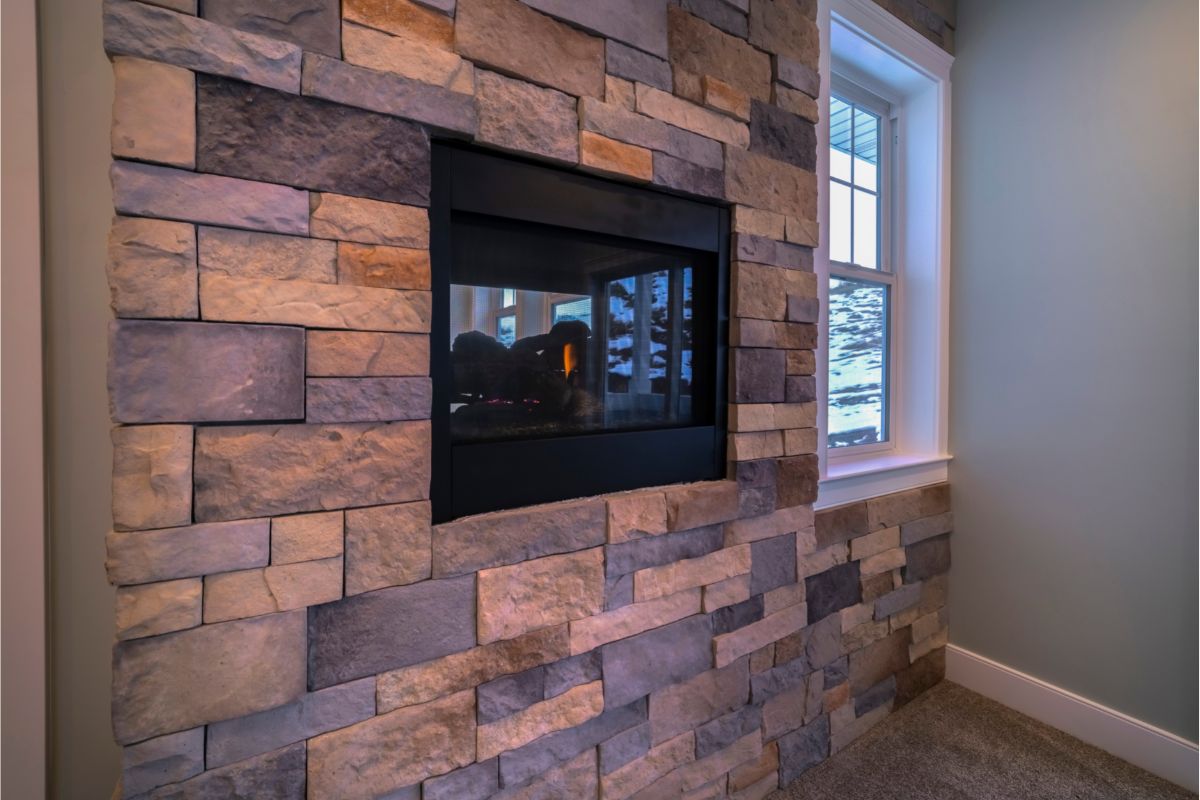If our houses are cold, many of us will warm up by lighting a fire in the fireplace. But how exactly does standing in front of a fireplace help us to get warm? We will explore this and more in the article below. So, if you’re interested, read on for more!

Why Do You Get Warm Standing In Front Of A Fireplace?
When we stand close to fires in fireplaces, we will feel warmer because we are in closer proximity to the heat source, which means we have better access to the heat it is producing.
Not only that, but standing in front of a fire allows our bodies to absorb heat much better. Absorbing heat makes us feel warmer.
This is why you will find fireplaces set up in homes at the back of rooms – to ensure that most of the room will get a hit of the heat. But what exactly is the science behind this? Let’s find out!
Why Do You Get Warm Standing In Front Of A Fireplace: The Science
Heat transfer operates as waves through space, at the speed of light in straight lines. So, you will feel warmer the closer you get to a heat source since there are no obstructions.
There are three different types of heat transfer: Convection, conduction, and radiation. When standing in front of a fire, you will experience all three types of heat transfer. Let’s check them out in more detail.
Fireplace Heat Transfer: Radiation
Radiation is the term used to describe the release of energy in the form of electromagnetic waves. Fires will emit this radiation in straight lines. So, when we are standing in front of a fire, we are going to feel the thermal radiation.
Fireplace Heat Transfer: Convection
The heat from the fireplace is transferred to us through a process called convection. Heat transfer of fires via convection will usually happen through a process called diffusion – the movement of heat from one place to another through gasses.
The air will move the heat from the fire to the space around it.
Fireplace Heat Transfer: Conduction

So, now that the heat is radiating from the fire and moving through the air, its next step is to interact with our bodies and change their temperature. This is a process called conduction.
Thermal energy can only travel in one direction, from something hot to something cold. Your body is always going to be colder than the fire, so the energy from the heat will be transferred to you, and your body temperature will begin to rise.
So, when you stand up in front of the fire, you are exposing your entire body to the air, which increases the contact area of your body, and will allow a lot of heat to interact with it and warm you up.
Is It A Good Idea To Stand In Front Of A Fireplace?
While it is true that standing in front of a fireplace is going to make you feel warm, it may not necessarily be the best idea. Standing in front of a fireplace comes with disadvantages, too.
Fire has a combustion process, and during this process, it will release smoke that can be bad for those who suffer from bronchitis or asthma.
So, while it should be okay to stand in front of a fireplace to warm up, you should not do it for extended periods of time in the interest of your health.
Why Is It Colder To Stand With Your Back To A Fireplace?
You may find that you are colder when you stand with your back to a fireplace, and there is a good reason for this. You will feel warmer when you stand with your back to a fireplace because of the way heat is conducted.
As previously mentioned, you feel warmer when standing and facing a fire because your body is exposed to the heat that will go directly into your skin and warm the blood vessels, through three processes: radiation, convection, and conduction.
However, when you turn your back to the fire, you stop exposing yourself directly to the heat. So, the heat will be conducted from the flames, through the air right to your back.
While you will eventually warm up, the process is far less efficient, and so you will be colder for longer.
Is It Warmer To Stand In Front Of A Heater Or Fireplace?
It is warmer to stand in front of a heater than it is to stand in front of a fireplace, and this is thanks to a process called forced convection.
Forced convection is the term used to describe the process of air being forced to circulate by unnatural means. In the case of heaters, fans force the air to circulate, which makes the air move faster and transfer to your body easier.
However, fireplaces are still extremely efficient at heating you and your home, especially when you stand in front of it. Not only that, but they are cheaper to run in the long run than heaters.
Why Is Heating Large Rooms Difficult?
You may be standing in front of your fireplace right now because even though the fire is lit, the room is still cold. Chances are, you are in a big room, and big rooms are difficult to heat. This is because they require a lot of energy to heat, so they take much longer.
Final Thoughts
You will warm up standing in front of a fire in the fireplace thanks to three scientific processes: radiation, convection, and conduction. Heat travels from the fireplace in electromagnetic waves, and this is known as radiation.
It will travel through the air via convection. Since thermal energy can only travel in one direction, the heat will move into our bodies through a process called conduction and begin to raise our body temperature.
When you stand in front of a fire, you are exposing yourself to more cold air, which allows more heat to interact with it.
- Discover the Ease and Elegance of Zero-Clearance Fireplaces - July 24, 2023
- How to Build a Frame for an Electric Fireplace Insert: A Step-by-Step Guide - July 16, 2023
- Bedroom Fireplace Ideas That Will Make You Want to Snuggle Up - July 16, 2023








